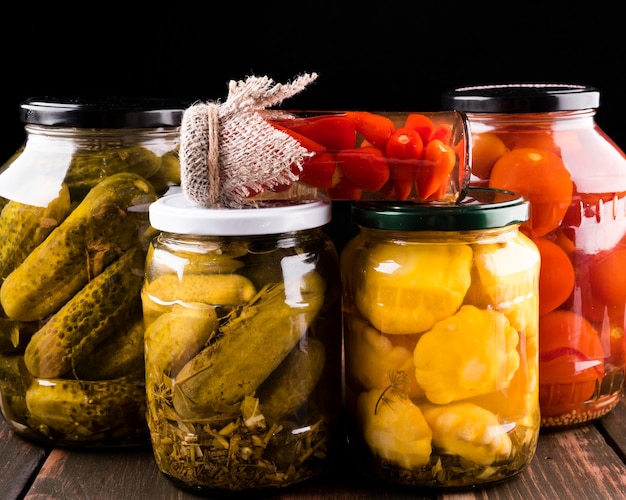This Is Who We Are
The Art of Fermentation
The Art of Fermentation
Fermentation is one of those culinary practices that feels ancient yet incredibly modern. With its rich history woven through countless cultures and cuisines, fermentation isn’t just about preservation; it’s a dance of flavor and health benefits that brings life to our plates. So, what exactly is fermentation, and how can we harness its magic in our kitchens? Let’s dive deep into the art of fermentation and unlock the secrets behind those tangy, delightful flavors.
Understanding Fermentation
At its core, fermentation is a natural process where microorganisms like bacteria and yeast break down sugars and starches into simpler compounds, resulting in food that’s not only tasty but also packed with probiotics. Think of it as nature’s way of transforming humble ingredients into extraordinary creations. From sauerkraut to kombucha, the possibilities are endless, and the flavors are out of this world.
But why is fermentation so special? Well, it’s not just about the taste. Fermentation can also enhance the nutritional profile of foods, making them easier to digest and more beneficial for our gut health. As Michael Pollan, a renowned food author, aptly puts it, “Fermentation is the ultimate form of food preservation, allowing us to enjoy a rich array of flavors while keeping our bodies in balance.”

The History of Fermentation
Fermentation has been practiced for thousands of years, dating back to ancient civilizations. The Egyptians used it to brew beer, while the Chinese fermented soybeans to create tofu. It’s fascinating to think that people have been enjoying the benefits of fermented foods long before modern science understood the processes at play.
In many cultures, fermentation plays a vital role in traditional diets. For instance, in Korea, kimchi is more than just a side dish; it’s a cultural staple, often served at every meal. Similarly, in Germany, sauerkraut is celebrated for its flavor and health benefits, especially during the winter months when fresh produce is scarce. This global appreciation for fermented foods speaks to their importance in our culinary history.
The Science Behind Fermentation
So, how does fermentation actually work? It starts with the fermentation of carbohydrates. When yeasts or bacteria are introduced to sugars, they produce lactic acid or alcohol, depending on the type of fermentation. This process not only preserves the food but also contributes to its unique flavors and textures.
The Role of Microorganisms
Microorganisms are the unsung heroes of fermentation. They’re responsible for the transformation of our ingredients, turning ordinary vegetables into tangy pickles and milk into creamy yogurt. Different microorganisms yield different flavors and textures, which is why it’s essential to understand the specific strains you’re working with.
- Lactic Acid Bacteria: Found in yogurt and sauerkraut, these bacteria create a tangy flavor while promoting gut health.
- Yeasts: Essential for brewing beer and making bread, yeasts produce alcohol and carbon dioxide, giving these foods their characteristic flavors.
- Acetic Acid Bacteria: Responsible for vinegar production, these bacteria add a sharp, acidic taste to fermented foods.
Understanding these microorganisms allows you to experiment with different fermentation techniques and achieve a wide range of flavors. It’s a world of possibilities waiting for you to explore.
Varieties of Fermented Foods
Now that we’ve set the stage, let’s take a closer look at some popular fermented foods that you can easily incorporate into your diet.
Kimchi
This spicy Korean dish is a staple in many households. Made from fermented cabbage and a blend of spices, kimchi is bursting with flavor and nutrients. It’s incredibly versatile, too! You can enjoy it as a side dish, in fried rice, or even as a topping for tacos.
How to Make Kimchi
-
Ingredients:
- Napa cabbage
- Sea salt
- Korean red pepper flakes (gochugaru)
- Garlic
- Ginger
- Fish sauce (optional)
- Green onions
-
Instructions:
- Cut the cabbage into quarters and sprinkle salt between the leaves. Let it sit for a few hours until wilted.
- Rinse the cabbage and mix it with the remaining ingredients in a bowl.
- Pack the mixture tightly into a jar, ensuring there’s no air pocket.
- Leave it to ferment at room temperature for 1-2 weeks, depending on your taste preference.
Sauerkraut
Sauerkraut is another classic fermented food that’s easy to make and loaded with flavor. It’s made from finely shredded cabbage and has a tangy taste that pairs well with various dishes.
How to Make Sauerkraut
-
Ingredients:
- Green cabbage
- Sea salt
-
Instructions:
- Shred the cabbage finely and mix it with salt in a bowl.
- Massage the cabbage until it releases its juices.
- Pack it tightly into a jar, ensuring it’s submerged in its brine.
- Let it ferment for about 3-4 weeks, checking for flavor and adjusting as needed.
Kombucha
If you’re a fan of fizzy drinks, you’ll love kombucha. This fermented tea is slightly sweet and tangy, making it a refreshing alternative to soda. Plus, it’s packed with probiotics!
How to Make Kombucha
-
Ingredients:
- Sweetened tea (black or green)
- SCOBY (Symbiotic Culture Of Bacteria and Yeast)
- Starter tea
-
Instructions:
- Brew the tea and add sugar while it’s still hot. Let it cool to room temperature.
- Pour the tea into a clean jar and add the SCOBY and starter tea.
- Cover it with a cloth and let it ferment for 1-2 weeks.
- Once it reaches your desired level of tanginess, bottle it and refrigerate.
Health Benefits of Fermented Foods
Fermented foods are not just tasty; they also offer a plethora of health benefits that can enhance your overall well-being.
Probiotics and Gut Health
One of the most significant advantages of consuming fermented foods is their high probiotic content. Probiotics are beneficial bacteria that support gut health by promoting a balanced microbiome. A healthy gut is crucial for digestion, immune function, and even mental health.
According to a study published in Nutrients, “Probiotic-rich fermented foods can enhance gut health and may improve mental well-being.” Including these foods in your diet can lead to improved digestion, reduced bloating, and even better nutrient absorption.
Nutrient Absorption
Fermentation can also enhance the bioavailability of certain nutrients. For example, fermented foods can increase the levels of vitamins B and K, making them more accessible for your body to absorb. This means that enjoying fermented foods can boost your nutritional intake while adding delightful flavors to your meals.
Hands-On Master Classes
Now that you’re inspired to explore the world of fermentation, consider signing up for a master class. These classes provide a hands-on experience where you can learn from experts and develop your fermentation skills.
What to Expect
In a fermentation master class, you can expect to:
- Learn about different fermentation techniques.
- Understand the science behind fermentation.
- Participate in making various fermented foods.
- Enjoy tasting sessions to experience the flavors firsthand.
Not only will you gain valuable knowledge, but you’ll also connect with like-minded food enthusiasts who share your passion for culinary exploration. Whether you’re a beginner or have some experience, these classes cater to all skill levels.
Incorporating Fermented Foods into Your Cooking
Adding fermented foods to your diet doesn’t have to be complicated. Here are some simple ways to incorporate them into your daily meals:
- Breakfast: Top your morning oatmeal with a dollop of yogurt or serve a side of kimchi with scrambled eggs.
- Lunch: Add sauerkraut to your sandwiches or wraps for a tangy kick.
- Dinner: Use kombucha as a marinade for meats or drizzle fermented sauces over your stir-fries.
- Snacks: Enjoy a bowl of fermented pickles or a glass of kombucha for a refreshing treat.
By integrating fermented foods into your meals, you’ll not only boost your health but also discover new flavors that elevate your culinary creations.
The Joy of Experimentation
One of the most exciting aspects of fermentation is the opportunity for experimentation. Don’t be afraid to try different ingredients or flavors. For instance, you can add spices to your kimchi or experiment with various teas in your kombucha. The beauty of fermentation lies in its adaptability and the endless possibilities it offers.
Unexpected Craftsmanship Intersections
Just as fermentation requires skill and experimentation to perfect flavors, playing casino slots involves a blend of strategy and intuition. Both processes celebrate the art of craftsmanship, whether you're carefully crafting a batch of tangy kimchi or fine-tuning your approach to spinning the reels. The anticipation in both realms is palpable; with every jar you seal, there’s a hope for a delightful culinary creation, while each time you hit "spin," you're yearning for that jackpot moment. As you savor the rewards of your fermentation efforts, why not indulge in the thrill of chance with some exciting slot games? Experience the rush of spinning the reels and maybe even strike it lucky. For a taste of that excitement, try out this fun slot game, Disco Funk slot. Both journeys—culinary and gaming—offer unique rewards and unforgettable experiences!
Conclusion
The art of fermentation is a fascinating journey that blends science, history, and culinary creativity. As you explore the world of fermented foods, you’ll discover flavors that awaken your taste buds and health benefits that nourish your body. So, why not dive in and start your fermentation adventure today?
Whether you’re enjoying homemade kimchi with dinner or sipping on refreshing kombucha, you’re not just indulging in tasty treats; you’re partaking in a time-honored tradition that connects us all. With every jar you fill and every recipe you try, you’re not just creating food; you’re creating memories, enhancing your health, and embracing the beauty of fermentation.
So grab your vegetables, brew your tea, and let the art of fermentation transform your kitchen into a world of flavors. You’ve got this, and your taste buds will thank you!
Find out what would make you a perfect team member… MORE

